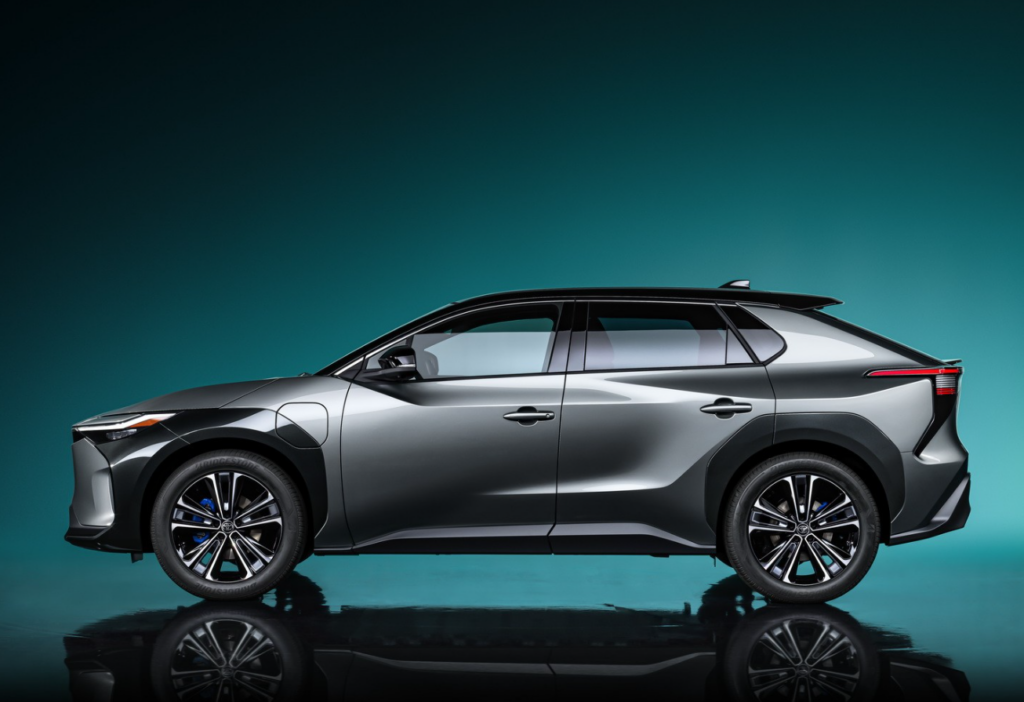By: Sebastian Toma
View the original article here
One of the problems with electric vehicles now, on top of the range, charging times, charging infrastructure, and the price is battery capacity degradation. The first owner of the vehicle may not be affected by it, but that might not be the case with the second or third owners. But there is hope.

Toyota’s upcoming EV, prefaced by the bZ4X Concept, is said to retain 90 percent of its initial battery capacity after a decade. At first, this might be something insignificant, but it means that the vehicle should be able to achieve 90 percent of its initial range after ten years of use.
The news is great if we look at what other automakers claim regarding battery capacity degradation. Most EVs on the market today are claimed to keep up to 80 percent of their initial capacity after eight years or so. Mind you, this is an average of several offerings in the market and should not be taken for granted.
Why is battery capacity degradation an issue? Well, just like in smartphones or laptops, over time, batteries will not be as good as they were when they were new. Some people change their smartphones or laptops sooner than others, and they never get to experience a battery that lost a significant amount of its initial capacity.
Replacing the battery of a smartphone or a laptop, for that matter, is technically possible for most, if not all, devices on the market today. The cost of a new battery is not that substantial, and it can bring new life to the device in question.
However, in the case of electric vehicles of yesteryear, the price of a new battery is in the range of several thousand (euros or dollars), and that can mean half or more than half of their resale value today.
With older model electric vehicles, owners are facing two issues before purchase, and a third looms in the background. The first two refer to the rather low range when they were new, along with current range after battery degradation, and the third is the cost of a replacement battery that looms in the not-too-distant future.
This is especially true for the first series of electric vehicles found on the market today, which did not excel when the range was concerned. The third issue I am referring to has to do with the drop in range due to the inevitable degradation of the battery, and the cost of a replacement unit.
People who buy those vehicles risk getting stuck with an electric vehicle that lost more than half of its initial battery capacity, which makes the range a pressing issue.
Why do I say getting stuck? Well, those customers bought second-hand electric vehicles to avoid the upfront cost of a new electric automobile. Unfortunately, they might have to pay more than those cars are worth on the used car market to replace their batteries and restore their initial range.
That might sound like a non-issue, but it is a genuine one, since a used mass-market electric vehicle can cost a couple of thousand dollars (or euros, for that matter), and its replacement battery is almost as expensive as the car.
Will that make the vehicle worth twice on the used car market? No, it will not. At best, it will be worth more than comparable examples without a replaced battery, but the person who pays for the battery replacement will lose the most money out of the entire thing.
Fortunately for those seemingly stuck in this situation, there is the option of going to an independent shop that replaces individual battery cells. It is still pricey, as the parts themselves and the knowledge of replacing them safely do not come cheap, but it will bring new life to an old battery at a fraction of the cost of a new battery. Unfortunately, we are far from the moment when these repair possibilities will be as commonplace as conventional engine repair workshops.
Enter Toyota and its promise to offer a battery that will keep ninety percent of its initial capacity over ten years of use. Even though the Japanese brand’s officials did not state if this applies with frequent quick charge use or how this durability is achieved, it is the start of a movement that will improve electric vehicles for all.
Eventually, the market will match Toyota’s battery durability target, and it will be commonplace for an electric vehicle to offer 90 percent of its initial range after a decade of use. That will bring a boost in resale value for used electric cars, along with more trust when purchasing a used electric vehicle.
Fortunately for everyone, battery capacity can be measured at a certified dealer of the brand in question. So, if you are looking for a used electric vehicle, it is wise to call the nearest dealer to inquire about the cost of a battery inspection, along with a pre-purchase inspection just to be on the safe side.
In the case of Toyota’s plug-in hybrids, the company estimated a 45 to 50 percent decrease in battery capacity after a decade of use, which improved to a 35 to 40 percent decrease for the second generation of the model. The China-only electric versions of the C-HR/IZOA come with even higher durability, which approaches 75 to 80 percent of initial capacity after a decade.
Once automakers find ways to make batteries more durable, used electric vehicles will get an extended life without high repair costs for their owners. In time, battery repair shops will become more commonplace, and technicians will learn how to safely diagnose and repair (even by replacement) batteries for electric vehicles.
